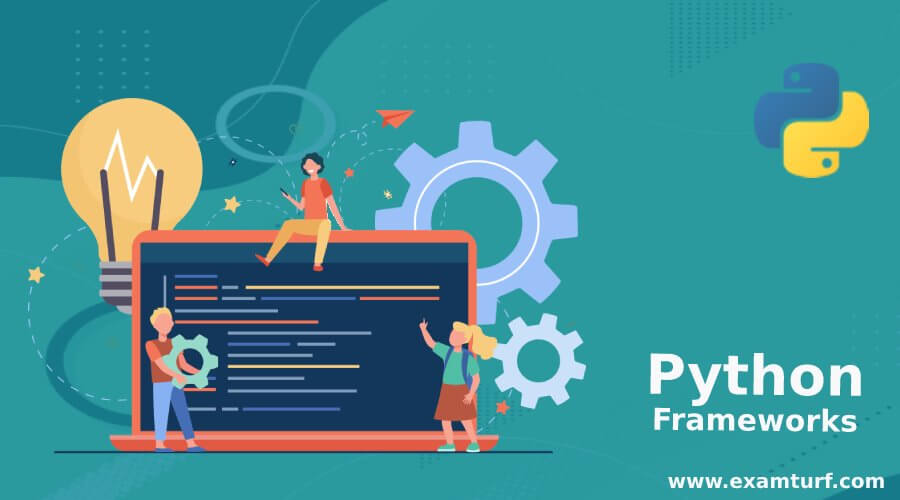
Introduction To Python Frameworks
The following article provides an outline for Python Frameworks. Python is a much popular and powerful programming language. It is a high-level, open-source, interpreted, and object-oriented scripting language. It is developed as highly readable. Its code is almost similar to the English language. Hence it is called a beginner’s language.
Key Takeaways
Django is a high-level web framework that is useful for rapid development. Allows users to develop web applications quickly.
- Provides fast development.
- With less coding.
- Providers don’t repeat yourself (DRY) principle.
- Strictly maintain clean pragmatic design.
History Of Python
- Python was developed in 1990 by Guido van Rossum. He was Dutch programmer and started developing Python in 1985.
- Python source code is available under GPL (General Public Licence).
- Python 2.0 was released in 2000 and the Python 3.0 was released in 2008. Python is generated from the C, C , ABC, UNIX shell, and other famous scripting languages.
Important Points Regarding Python Frameworks
Given below are some important points regarding Python Frameworks:
- Python framework is a structure or set of packages and modules.
- It makes developer’s life easier by automating the general implementation of code.
- It is possible to develop web applications so quickly using the framework.
- The framework is similar to the library but using a framework is easier than the library because to needs to learn all functionality while using the library but in the case of the framework, there is no need to learn all functionality as it provides in-built functionality. There are three types of the framework in Python and each framework contains a set of advantages.
Types Of Python Framework
Given below are the types of Python Framework:
1. Full-Stack Framework
The full-stack framework is a set of all development needs. The full-stack framework provides the best and easier environment for web development. It is useful for developing, optimizing, and maintaining websites.
2. Microframework
Microframework is a framework with limited functionality. It is a lightweight and minimalistic web application framework. It doesn’t provide many functionalities such as database abstraction, authentication, input validation, input sanitation, and web template engine.
3. Asynchronous Framework
It is the latest framework and became popular. Using asynchronous framework developers can manage and handle a large set of concurrent connections.
4. Python Web Framework
It is a collection of packages to help developers to write web applications. It provides functionality to interpret requests, produce responses, and sort data.
| Framework | Type | Details |
| Django | Full-stack | To develop apps in less time and with less code. It uses the DRY (don’t repeat yourself) principle. |
| TurboGears | Full-stack | To develop database-handling and ready-to-extend applications. |
| Web2py | Full-stack | It provides IDE with it you can develop, debug, deploy, test the database. |
| CherryPy | Microframework | It is an oldest and minimalistic framework. It is developed for extensibility and provides hooks and extensions. |
| Sanic | Asynchronous | It offers fast HTTP responses through asynchronous response handling. |
5. Python GUI Frameworks
Python provides diverse options for GUI:
| Framework | Details |
| Kivy | It is a library for innovative and fast development of applications. |
| PYQT | It is a set of v2 and v3 bindings for the QT application. QT includes Unicode, SQL database, SVG, OpenGL, threads, and XML. |
| PySimpleGUI | It supports the python3 version. It is simple to create a custom GUI. |
| Pyforms | Framework for developing GUI. It provides a python layer of desktop forms. This framework allows application on the desktop. |
| TKinter | It is a standard GUI package. It is available on UNIX and Windows. |
6. Python Testing Framework
Python is becoming famous among the tester:
| Framework | Details |
| Robot | It is useful for acceptance testing and robotic process automation. |
| Pytest | It is for unit testing, functional testing, and API testing. |
| TestProject | You can use test automation for mobile app and web apps. |
| PyUnit | It is the default testing framework that comes with the python package. |
Conclusion
Python is taking momentum because of its framework. It provides in-built code for developers to ease their work. Using framework users can develop applications as fast as possible.
Recommended Articles
This is a guide to Python Frameworks. Here we discuss a brief overview on python frameworks, history of the python, along with different types in detail. You may also have a look at the following articles to learn more–
- Python Programming
- Is Python a Scripting Language?
- Pointers in Python
- Arithmetic Operators in Python
Are you preparing for the entrance exam ?
Join our Python test series to get more practice in your preparation
View More